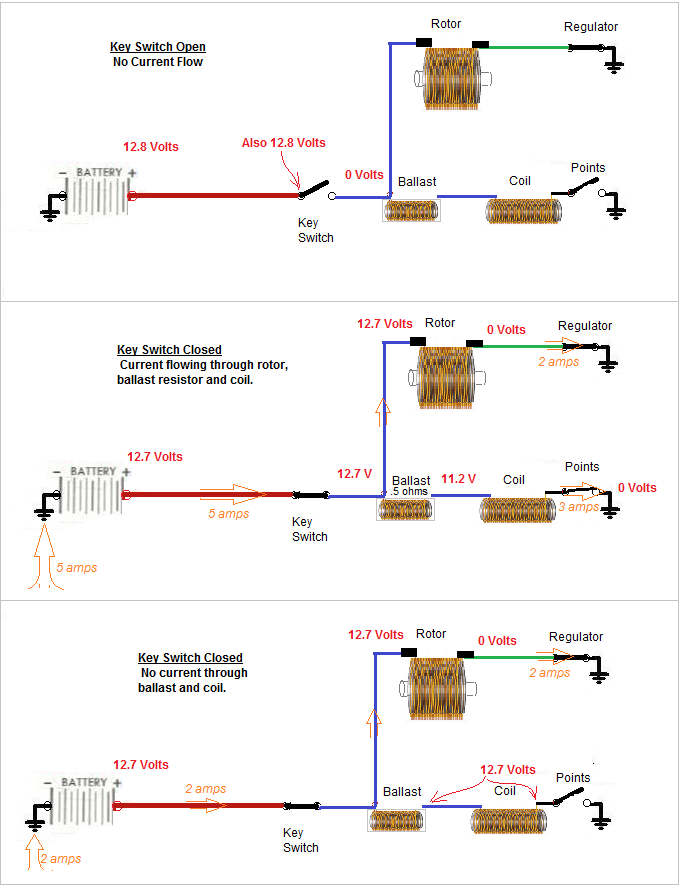Exactly what Sniper wrote.
When current flows through a resistance, the voltage drops.
That resistance can be the filament in a light bulb, the inductive windings in a coil, or a resistor.
When there is no flow through that circuit branch, then there is no voltage drop.
On a normal inductive ignition, the points (or equivalent) open and connect the circuit so while the engine is running at low rpm the meter may show the pulsing of voltage as the current stops and then flows.
That's not to say the mallory coil was good, it very well may have been bad. It's simply to explain that the volt meter readings like that, with a key in run, engine off, could be considered normal.
It might be worth checking now with the engine running so you'll have a baseline for any future checks.
The mallory Hyfire 6A is a capacitive discharge ignition. Those send a powerful electrical pulse through the coil primary system. When something like that is wired in the ballast resistor is out of the picture as far as power to the coil goes. In many cases it does no harm to leave it.
Think of current as electrons moving like water flowing in a pipe.
When that water pushes through a small pipe, a toilet valve, a turbine there is pressure lost getting through those obstructions. When there is no flow through them, there is no loss.
Here's how it works on an Chrysler ignition circuit assuming no resistance in any connections or wires between devices.
Because the ballast resister and coil's primary winding are in series, the voltage in between the two is above zero but less than the voltage available (12.7 V).

Last edited by Mattax; 09/29/20 06:37 PM.

